Hello fellow Rocket folk! In a number of my books and photos, the Saturn 1b and V show not only black and white colors, but in closeups before and during lift off show in addition to the two aforementioned colors, a beige color! If I hadn't lost contact with an Ill State University classmate, David S.F. Portree, I wouldn't be asking this question as I'd ask him ;--)). I'm getting ready to build my AMT "Men Into Space set (( yes, I'm ordering the Indycals" correction set) and I want to get the color's right. Thank You all in advance. Larry (Vitruvius)
You are using an out of date browser. It may not display this or other websites correctly.
You should upgrade or use an alternative browser.
You should upgrade or use an alternative browser.
What are the REAL colors of the Saturn 1b and Saturn V, please?
- Thread starter Vitruvius
- Start date

Help Support The Rocketry Forum:
This site may earn a commission from merchant affiliate
links, including eBay, Amazon, and others.
- Joined
- Jan 30, 2016
- Messages
- 8,993
- Reaction score
- 3,517
heada
Well-Known Member
Peter's drawings in RotW only have black/white/silver for all of them except some red on Saturn 1block2 and there is yellow on the antenna panels on the 1b
I think the "before and during liftoff" part is key. Might be reflection of the exhaust flame and the lighting.but in closeups before and during lift off show in addition to the two aforementioned colors, a beige color!
Just my 2 cents.
@Kiririn, You might be right, but if so, why does the entire rocket not look beige as opposed to beige AND white as I have seen in films and photos? I'm open to any differing ideas! Cheers!
Having been to the Saturn V center at Kennedy space center and the Manned Spaceflight center The main color of the SV is white. The SV's (indoors, with indoor lighting) look to have a very slight cream shade of white. The S1b outside and all the white rockets (Redstone, Agena, Jupiter, Little Joe II Apollo) are all pure white.
Take from that what you will. When I visited the Saturn V center the lighting was a combination of natural window lighting and large industrial fixtures (Halogen or carbon arc?). The lighting in Houston was small windows and large very bright bulb fixtures, high up. The indoor lighting did not look to be incandescent at all.
For me, I painted my Estes SV white/black/and silver. When I build my AMT Man in Space SV and my Revel SV I'll be using White/black/silver. The particular paint will be Tamiya purewhite and Tamiya flat black. After decals I'll hit it with a semi-matt clear.
Take from that what you will. When I visited the Saturn V center the lighting was a combination of natural window lighting and large industrial fixtures (Halogen or carbon arc?). The lighting in Houston was small windows and large very bright bulb fixtures, high up. The indoor lighting did not look to be incandescent at all.
For me, I painted my Estes SV white/black/and silver. When I build my AMT Man in Space SV and my Revel SV I'll be using White/black/silver. The particular paint will be Tamiya purewhite and Tamiya flat black. After decals I'll hit it with a semi-matt clear.
modeltrains
Well-Known Member
- Joined
- Jun 29, 2011
- Messages
- 1,872
- Reaction score
- 757
Here's a NASA image of part of Apollo 14 in the assembly building, showing white and off white,
https://history.nasa.gov/afj/ap13fj/photos/19700114-70-hc-793.jpg
This bit of Apollo 11 shows white and off white,
https://www.hq.nasa.gov/office/pao/History/ap11ann/kippsphotos/69-HC-341.jpg
This bit of Apollo 8 suggests the corrugations were off white compared to the smooth cylindrical sections being white,
https://www.nasa.gov/sites/default/files/thumbnails/image/6761894-orig.jpg
Apollo 15 looks to be white and off white, and 3 different off-whites in the mid section.
https://www.spaceflight.nasa.gov/gallery/images/apollo/apollo15/html/s71-33781.html
White and off white are discernible on the factory floor there,
https://history.nasa.gov/MHR-5/Images/fig367.jpg
And there,
https://history.nasa.gov/MHR-5/Images/fig348.jpg
https://history.nasa.gov/afj/ap13fj/photos/19700114-70-hc-793.jpg
This bit of Apollo 11 shows white and off white,
https://www.hq.nasa.gov/office/pao/History/ap11ann/kippsphotos/69-HC-341.jpg
This bit of Apollo 8 suggests the corrugations were off white compared to the smooth cylindrical sections being white,
https://www.nasa.gov/sites/default/files/thumbnails/image/6761894-orig.jpg
Apollo 15 looks to be white and off white, and 3 different off-whites in the mid section.
https://www.spaceflight.nasa.gov/gallery/images/apollo/apollo15/html/s71-33781.html
White and off white are discernible on the factory floor there,
https://history.nasa.gov/MHR-5/Images/fig367.jpg
And there,
https://history.nasa.gov/MHR-5/Images/fig348.jpg
Last edited:
Type of lighting and texture of the surface (and not even mentioning type of film emulsion) can make a difference in the appearance of colors.
Sat 1B SA-205 first stage with indoor lighting:

Notice the beige tint.
Sat 1 outdoors in full sunlight:

See the difference?
Imagine what a night or early morning launch with low level lighting and the orange plumes of exhaust will do to the colors.
Sat 1B SA-205 first stage with indoor lighting:

Notice the beige tint.
Sat 1 outdoors in full sunlight:

See the difference?
Imagine what a night or early morning launch with low level lighting and the orange plumes of exhaust will do to the colors.
Great photos!
Off hand I would say that most of the color difference is due to the corrugation not actual color shade difference. But I could easily be wrong.
From Houston:
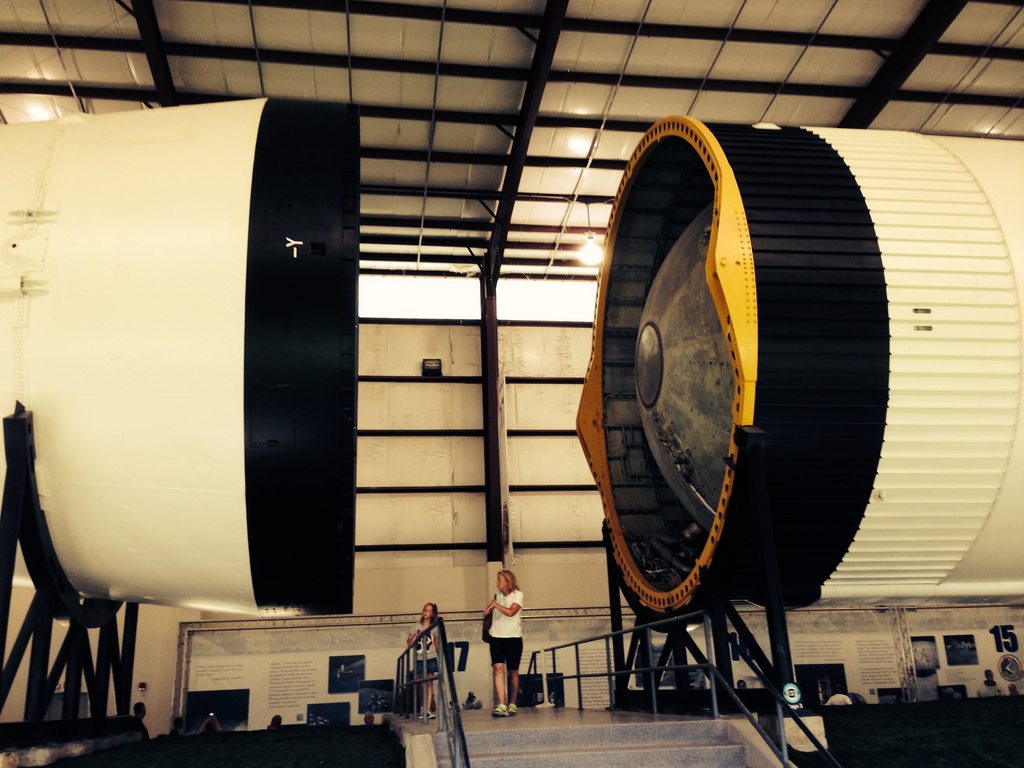
From Florida:
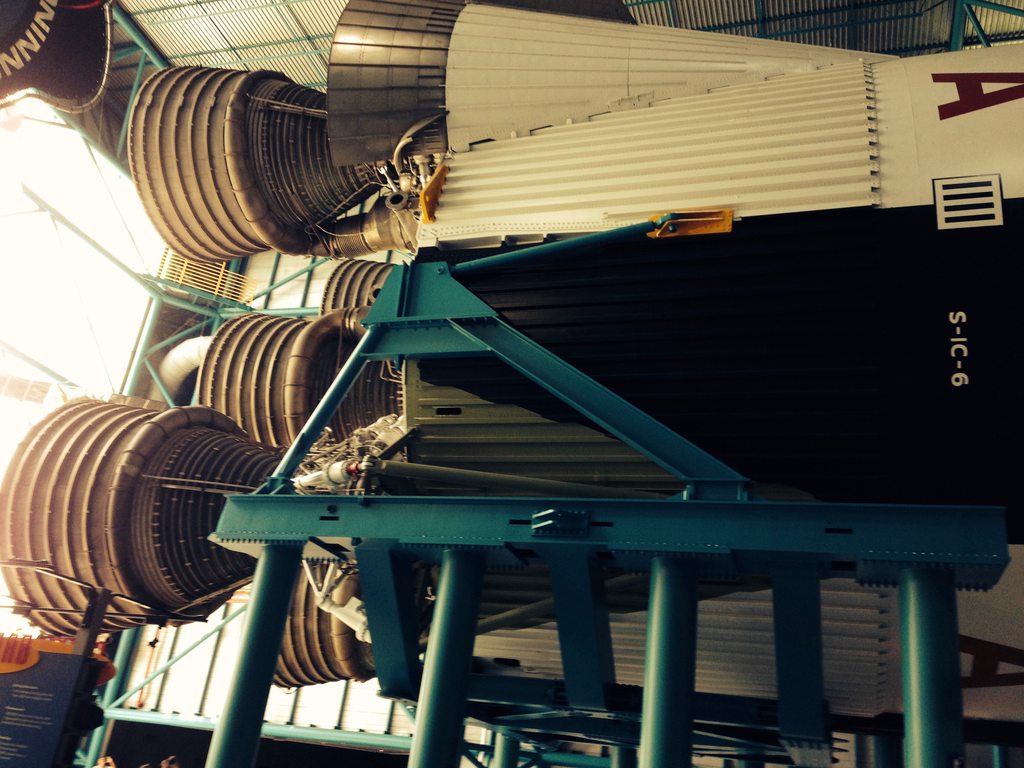
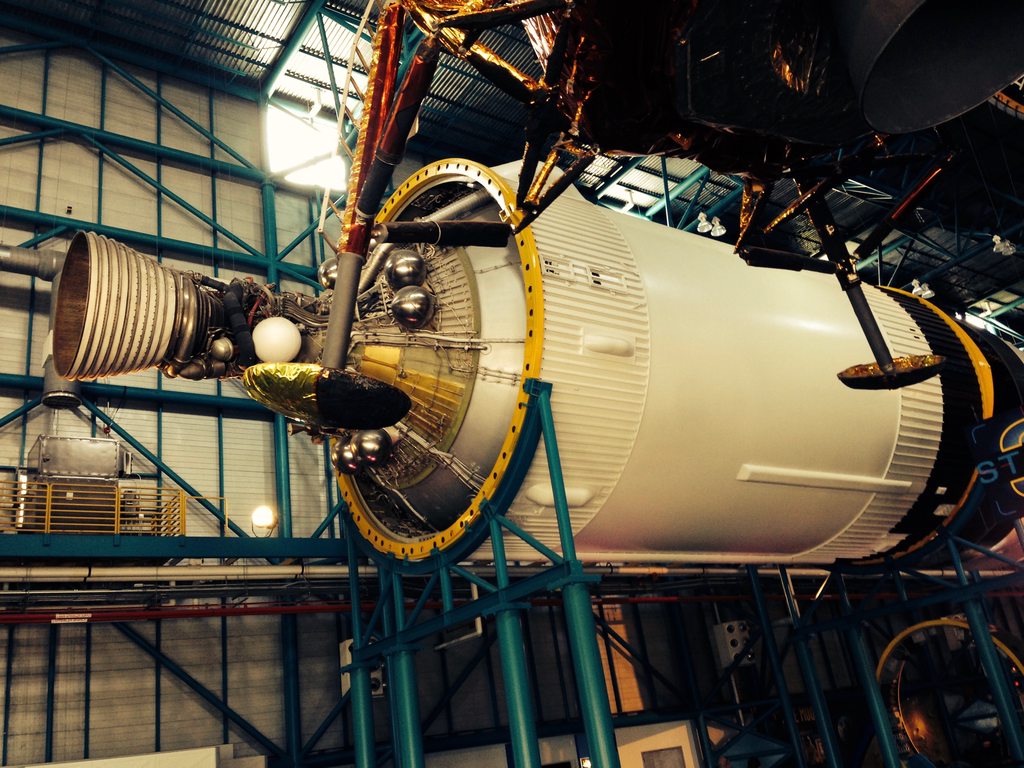
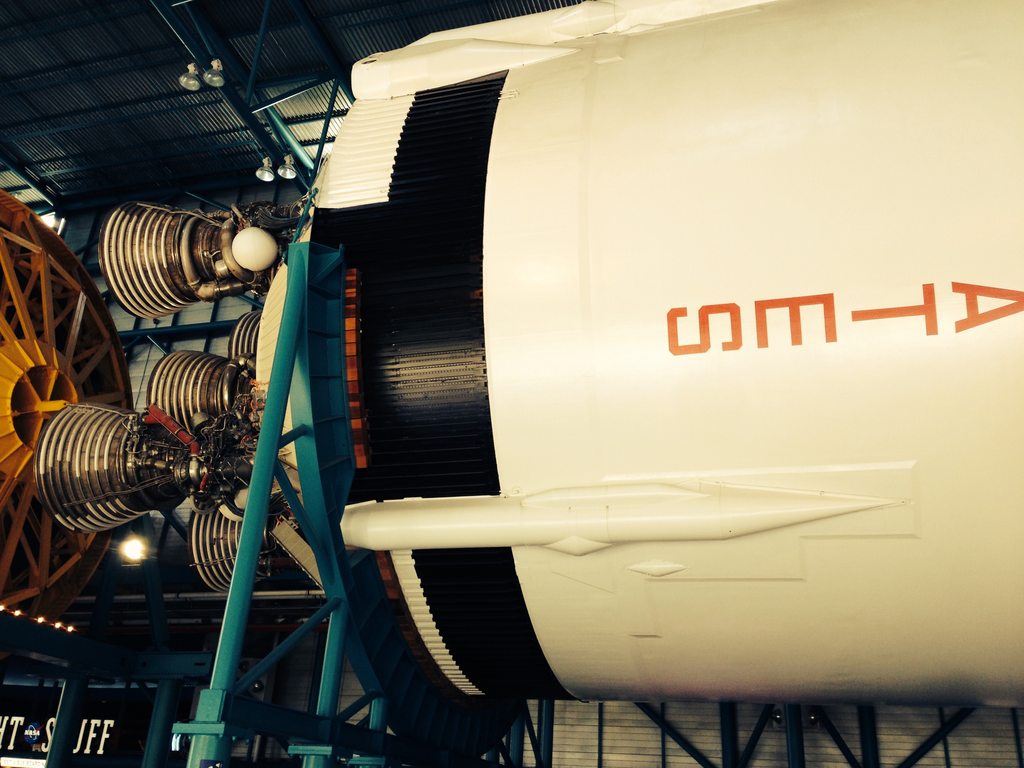
There was no difference to my eye between the corrugation and the smooth surface.
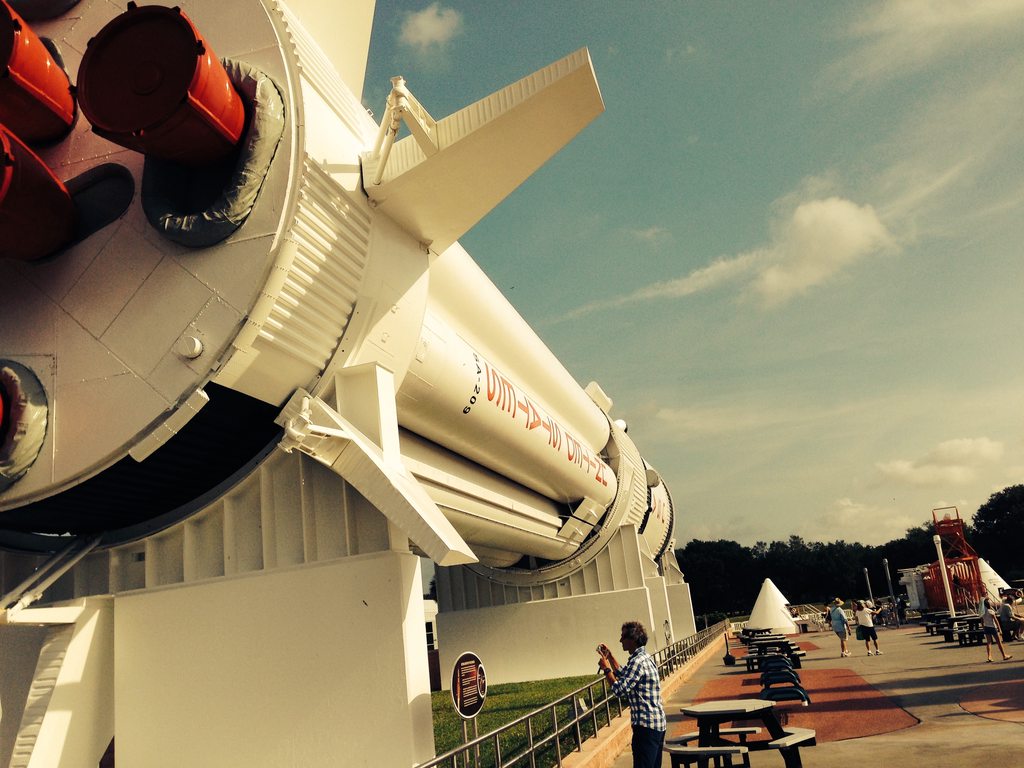
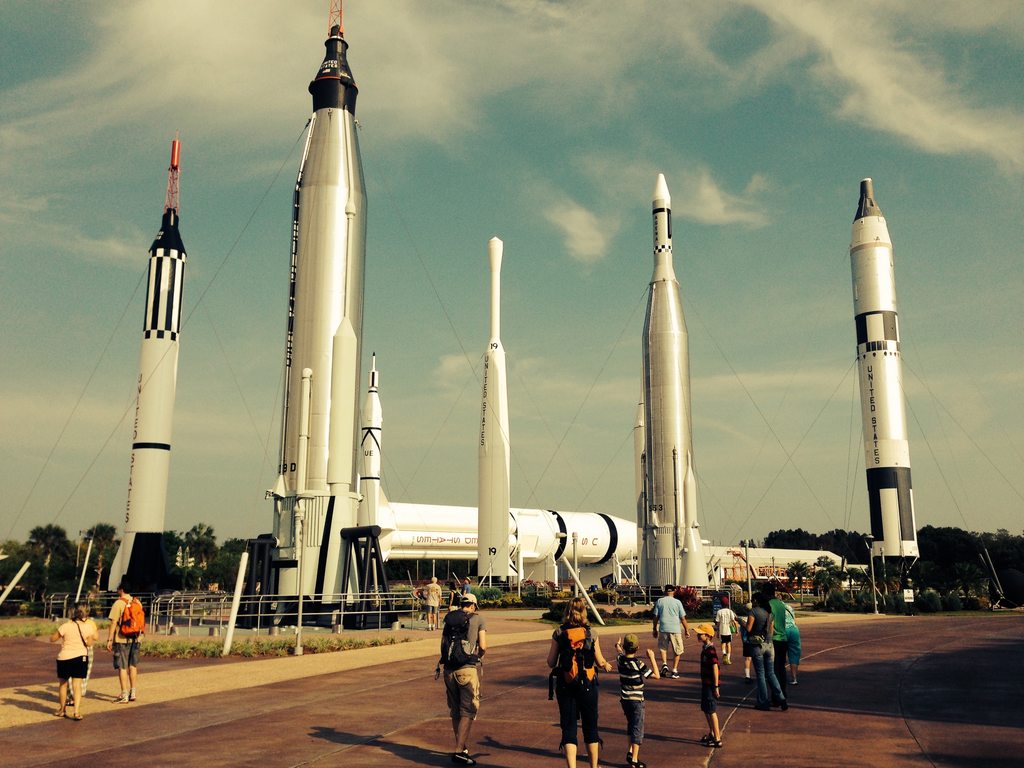
Off hand I would say that most of the color difference is due to the corrugation not actual color shade difference. But I could easily be wrong.
From Houston:

From Florida:



There was no difference to my eye between the corrugation and the smooth surface.


Thank You one and all for Your input! ;-)) ! I see now that this is one of those "Starship Enterprise (TOS) color situations. To wit; under certain lights, the color looked to be any where from Concrete with a hint of green ( Which the model really was) to green or even blue. It was a matter of how each color paint reflects a certain grade and type of light in the spectrum.
As a kind result of All Of Your help, my Friends, I will go Back/Silver/white and a VERY light off white...VERY light off white! Thank You ALL for Your help!
As a kind result of All Of Your help, my Friends, I will go Back/Silver/white and a VERY light off white...VERY light off white! Thank You ALL for Your help!
- Joined
- Sep 17, 2013
- Messages
- 4,399
- Reaction score
- 2,290
A fellow RC modeller Dave Platt has a video series on building scale model aircraft including mixing colors and weathering. Well worth the price. He takes you step by step through the process of building a show winning model. Very informative. https://daveplattmodels.com/Videos/index.htm
modeltrains
Well-Known Member
- Joined
- Jun 29, 2011
- Messages
- 1,872
- Reaction score
- 757
I'm getting ready to build my AMT "Men Into Space set
And while we're talking that set,
I decided the Gemini's booster needed a "durability enhancement"
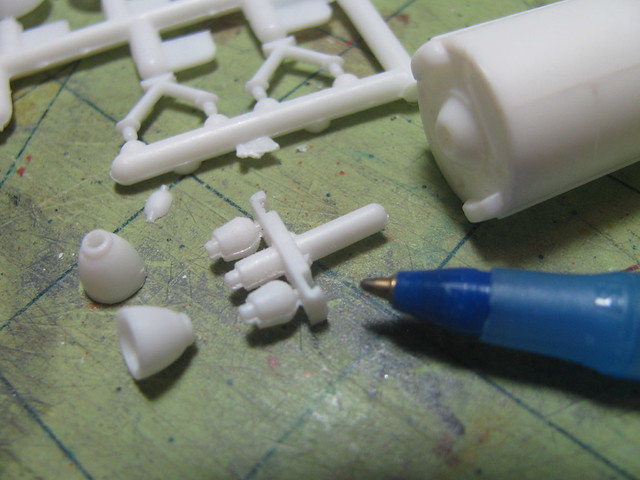
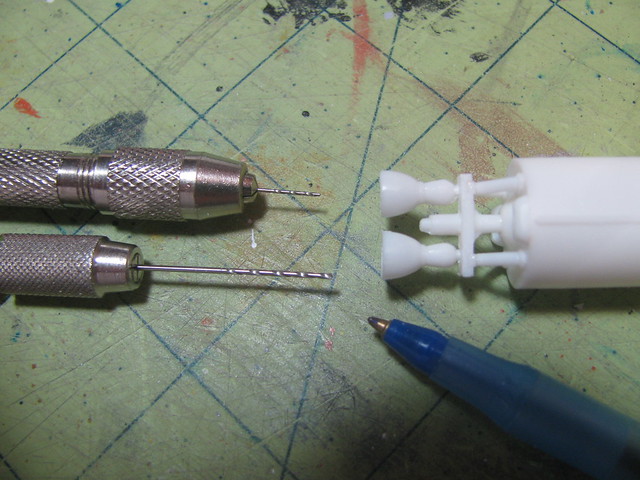
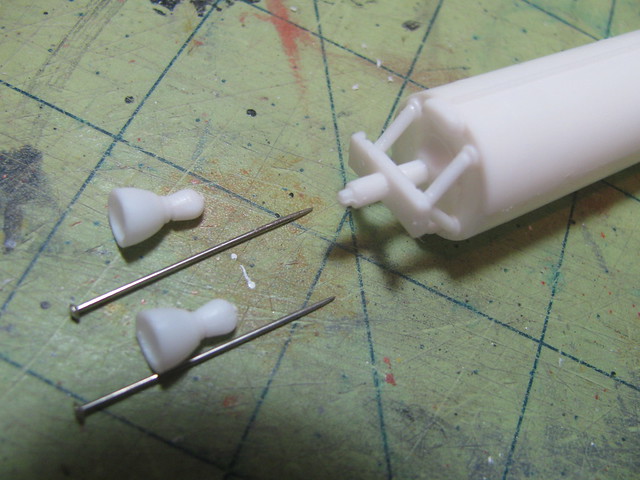
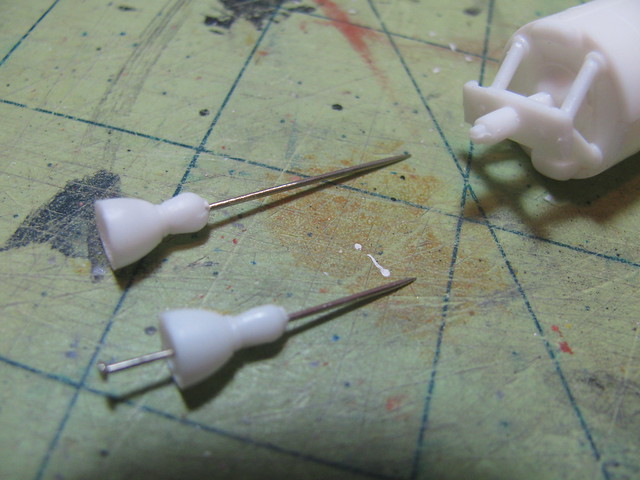
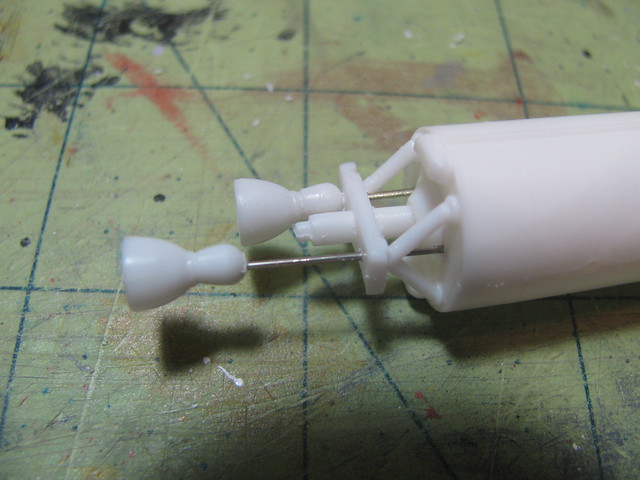
- Joined
- Sep 17, 2013
- Messages
- 4,399
- Reaction score
- 2,290
Have I seen a gun metal on the lower shrouds or engines or am I remembering wrong?
modeltrains
Well-Known Member
- Joined
- Jun 29, 2011
- Messages
- 1,872
- Reaction score
- 757
Welcome!VERY light off white...VERY light off white! Thank You ALL for Your help!
What the plan is when I finally get around to painting my MPC, Revell, Airfix, Saturn Vs is to do the off white with Tamiya white plus a few drops of what they used to call 'deck bleached teak' or something similar.
(the MPC one has been in grey primer for a couple years - messy health can slow things down a bit)
modeltrains
Well-Known Member
- Joined
- Jun 29, 2011
- Messages
- 1,872
- Reaction score
- 757
Look at top of stage here where there is a panel of white within the off white, https://history.nasa.gov/afj/ap13fj/photos/19700114-70-hc-793.jpgOff hand I would say that most of the color difference is due to the corrugation not actual color shade difference.
- Joined
- Sep 17, 2013
- Messages
- 4,399
- Reaction score
- 2,290
That might be from the corrugation casting shadows.Look at top of stage here where there is a panel of white within the off white, https://history.nasa.gov/afj/ap13fj/photos/19700114-70-hc-793.jpg
modeltrains
Well-Known Member
- Joined
- Jun 29, 2011
- Messages
- 1,872
- Reaction score
- 757
As for the various Saturns on display, when were they repainted and what were they repainted with?
https://i109.photobucket.com/albums/n62/robertlundin/s83-45406_011.jpg
https://www.tuscaloosanews.com/news/20181202/space-and-rocket-center-repainting-saturn-v-replica
https://www.cleveland.com/science/2013/02/new_book_recounts_how_akrons_t.html
https://i109.photobucket.com/albums/n62/robertlundin/s83-45406_011.jpg
https://www.tuscaloosanews.com/news/20181202/space-and-rocket-center-repainting-saturn-v-replica
https://www.cleveland.com/science/2013/02/new_book_recounts_how_akrons_t.html
But when Paul Thomarios saw Kennedy Space Center's surviving Saturn V up close in 1995, it looked more like a junkyard cast-off than an icon. Two decades in the Florida sun and salt air had ravaged the once-pristine rocket, which rested on its side at the space complex as busloads of tourists trundled by.
Small trees had taken root in its waterlogged insulation, and blackbirds built nests in its nooks and crannies. Grime and greenish mildew coated almost every inch of the 36-story rocket. Beneath the sludge were 20 or more layers of paint, much of it not historically accurate but slapped on to try to retard the relentless seaside corrosion. The peeling paint and scabs of patching material masked gaping holes in the Saturn V's aluminum skin.
- Joined
- Sep 17, 2013
- Messages
- 4,399
- Reaction score
- 2,290
As for the various Saturns on display, when were they repainted and what were they painted with?
https://i109.photobucket.com/albums/n62/robertlundin/s83-45406_011.jpg
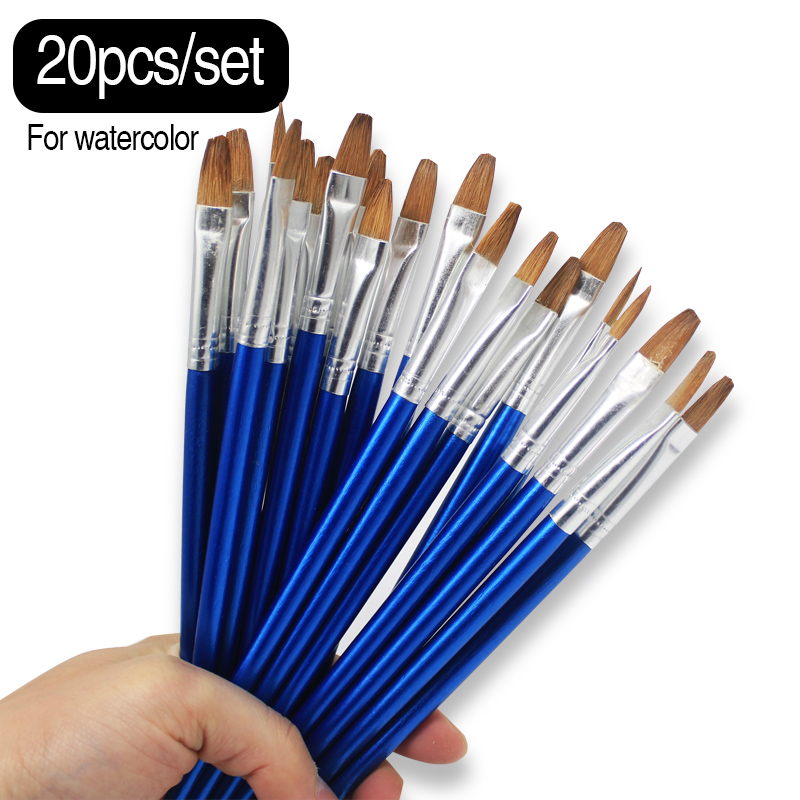
modeltrains
Well-Known Member
- Joined
- Jun 29, 2011
- Messages
- 1,872
- Reaction score
- 757
This thread is brining to mind something a somewhat cynical railway modeller once said at another time about another thing,
"When documentation contradicts tradition, go with tradition, most people know how to cope with tradition."
"When documentation contradicts tradition, go with tradition, most people know how to cope with tradition."
That wouldn't have been the late Andy Sperando would it? Or maybe the Great. Immortal John Allen, perhaps? I love all the input! Thanks again!
I'm wondering if some of these colour differences are not only lighting but also film stock and processing, Kodachrome vs Ektachrome vs Kodacolor vs Fujifilm Provia for example. Lots of white colour deviation in just that small selection and very different between negative stock and transparency films. Any film that was 'push processed' to a higher ASA to compensate for low light levels will also have a colour shift.
My $0.02
My $0.02
That top pic really shows up the white picking up the color cast from the red structures around it nicely.Type of lighting and texture of the surface (and not even mentioning type of film emulsion) can make a difference in the appearance of colors.
Sat 1B SA-205 first stage with indoor lighting:
View attachment 432440
Notice the beige tint.
Sat 1 outdoors in full sunlight:
View attachment 432441
See the difference?
Imagine what a night or early morning launch with low level lighting and the orange plumes of exhaust will do to the colors.
Quite likely. Kodachrome was always a warmer film than Ektachrome. Likewise for the warmer Kodacolor vs Fujifilm.I'm wondering if some of these colour differences are not only lighting but also film stock and processing, Kodachrome vs Ektachrome vs Kodacolor vs Fujifilm Provia for example.
You Folks are ALL making great points!!!!!! Thanks for Your input!
Similar threads
- Replies
- 7
- Views
- 565
- Replies
- 2
- Views
- 2K
- Replies
- 5
- Views
- 2K






